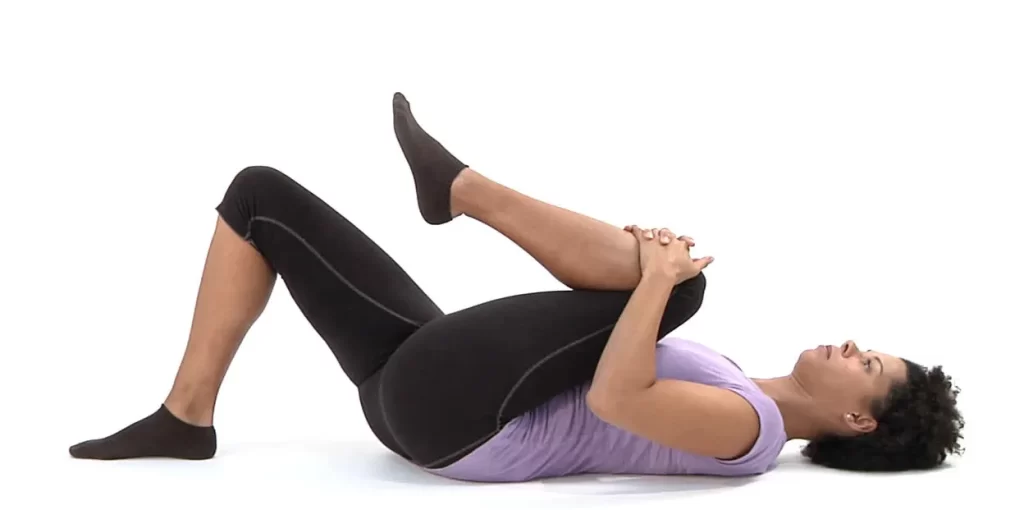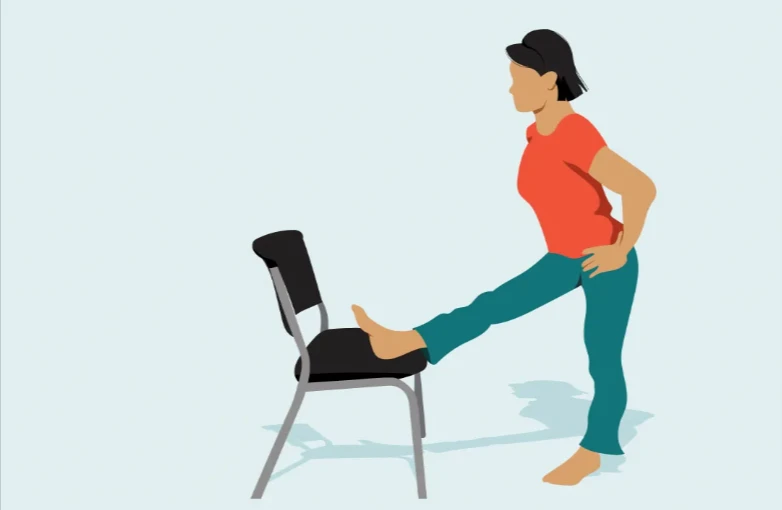“I was blinded by the pain, out of breath, and my skin was all red from the stress of squeezing every muscle in my body to avoid more shocking pain.“
I can remember my sciatica pain episodes after my herniated disc, the pain would radiate downward into my right buttock into my leg and even all the way into the foot.
Sciatica pain is hard to forget as at times it can be excruciating, and while it may be hard to believe, sciatica often goes away within 3 months with conservative treatment.
It took about 4 months for mine to be gone completely but I did have initial relief within 2 weeks and was able to return to work.
I used various at-home exercises and strategies, and I will explain what some of these at-home remedies below, you can try them right away.
Sections
- 5 At-home sciatica nerve pain remedies
- When should you see a doctor about sciatica pain?
- 1. If the pain lasts longer than two weeks
- 2. If the pain gets worse, even after at-home treatments
- 3. You have severe pain in your low back and legs
- 4. You have additional stomach pain
- 5. There is pain accompanied by weakness, tingling, or numbness in the arms or legs
- 6. You have trouble with urinary or bowel control
5 At-home sciatica nerve pain remedies
1. Move more often
It may feel unnatural to exercise when you’re in pain, but research suggests that being stuck in the same posture the entire day can lead to all sorts of pain and other health issues, with sciatica being one of the most commonly reported.
Try to incorporate some gentle exercise into your day to ease your sciatica. The key word being gentle: Exercise should not be painful or strenuous.

A walk around the block is a great example of a physical activity that is both gentle and accessible and can be done without the risk of doing any additional damage.
2. Stretching
Tightness in your lower back, hips and/or hamstring muscles can worsen your sciatic nerve pain.
By incorporating gentle stretching into your daily routine you will be able to reduce sciatic nerve tension and relieve pain.
The great thing about most stretches is they are simple enough to be done at home whilst watching the television.
Below are three easy at home stretches to relieve sciatica pain:
Glute/Piriformis stretch
Lie down on your back with both knees bent then bring your right leg up and place your right ankle on top of the left knee.
Clasp both hands behind your left knee and gently lift the left foot off the ground and pull the left knee towards your let shoulder until you feel your glute is pulled tight.

Hold the position for up to 30 seconds. This helps stretch the piriformis and gluteus muscles, which sometimes becomes inflamed and presses against the sciatic nerve, causing pain.
Switch legs and do the same exercise with the other leg.
Single knee-to-chest stretch
Whilst you are in the ground you can also perform this stretch which will help to release tension in your glutes and low back which can help relieve tension on your sciatica nerve.
Lie down on your back with both legs straight then slowly bring your right knee up towards your chest.

Place your hands behind that knee and gently pull it towards your chest.
You should then feel a comfortable stretch in the lower back and buttock.
Hold the position for up to 30 seconds and then repeat on the other side.
Standing hamstring stretch
This stretch can help ease pain and tightness in the hamstring caused by sciatica.
Place your right foot on an elevated surface such as a chair, foot stool, or even a step on a staircase.
Make sure it is below hip level.

Flex your foot towards you so your toes and leg are straight.
Gently bend your body forward slightly toward your foot keeping your chest up and back flat. You should feel a stretch in the back of your upper thigh. Do not push so hard that you feel pain.
Hold the position for up to 30 seconds and then repeat on the other side.
Below is a video that goes over a series of stretches in a follow along routine which are designed to reduce sciatica nerve pain.
3. Apply an ice pack
Ice therapy is a great way to quickly cool down your acute, burning sciatica pain as it can slow down the speed at which your nerves send pain signals to the brain.
When you apply an ice pack to the rear of your pelvis (the region of your sciatic nerve roots), the cooling temperature helps to constrict your blood vessels and reduce blood flow.
This, in turn creates a numbing effect on the nerves and instantly reducing pain.
4. Sciatica nerve glide (flossing)
Nerves can also become tight after an injury, nerve glides or flossing can help to help improve the neurodynamics (nerve motion) and both relax and desensitize your sciatic nerve.
This will help you move better and feel better.
Seated Nerve Glide
Sit upright on a chair and straighten one knee out in front of you.
As you get to the end of the movement slowly bend your ankle so that your toes are pointing towards you.

Hold that for a second and gently tilt your head backwards and look at the ceiling.
Then return your head to neutral, bend the knee of the straight leg and return to the start.
Now repeat 10 to 15 times on the same side and then switch over to the other leg for the same number.
Try to do this twice for each leg two times a day.
You can follow along with the instructional video below.
5. Decompression stretches
If your sciatica stems from a herniated or bulging disc then it is a good idea to try some decompression stretches.
You do not need to go and use some special machine there are specific at home stretches that you can do that are designed to decompress the spine and give you some sciatica pain relief.
These stretches are quite technical and the below video takes you through one for the L5 S1 region of the lumbar spine.
When should you see a doctor about sciatica pain?
While sciatica pain often responds well to at-home remedies, there are some symptoms that should have you making an appointment with your doctor.
These include:
1. If the pain lasts longer than two weeks
2. If the pain gets worse, even after at-home treatments
3. You have severe pain in your low back and legs
4. You have additional stomach pain
5. There is pain accompanied by weakness, tingling, or numbness in the arms or legs
6. You have trouble with urinary or bowel control
It’s vitally important to talk with a doctor when your back pain starts to interfere with your daily life as they will be able to guide you on the next steps.

Sciatica on its own is not a worrying condition, but it can cause us physical pain and even mental distress which can worsen over time.
If you or someone you know is struggling with back pain, sign up for my course HERE and begin the journey to pain-free living.
Not ready for the challenge?
Then subscribe to my weekly emails with helpful hints and tips on how to reduce your lower back/sciatica pain, Sign Up Here.

